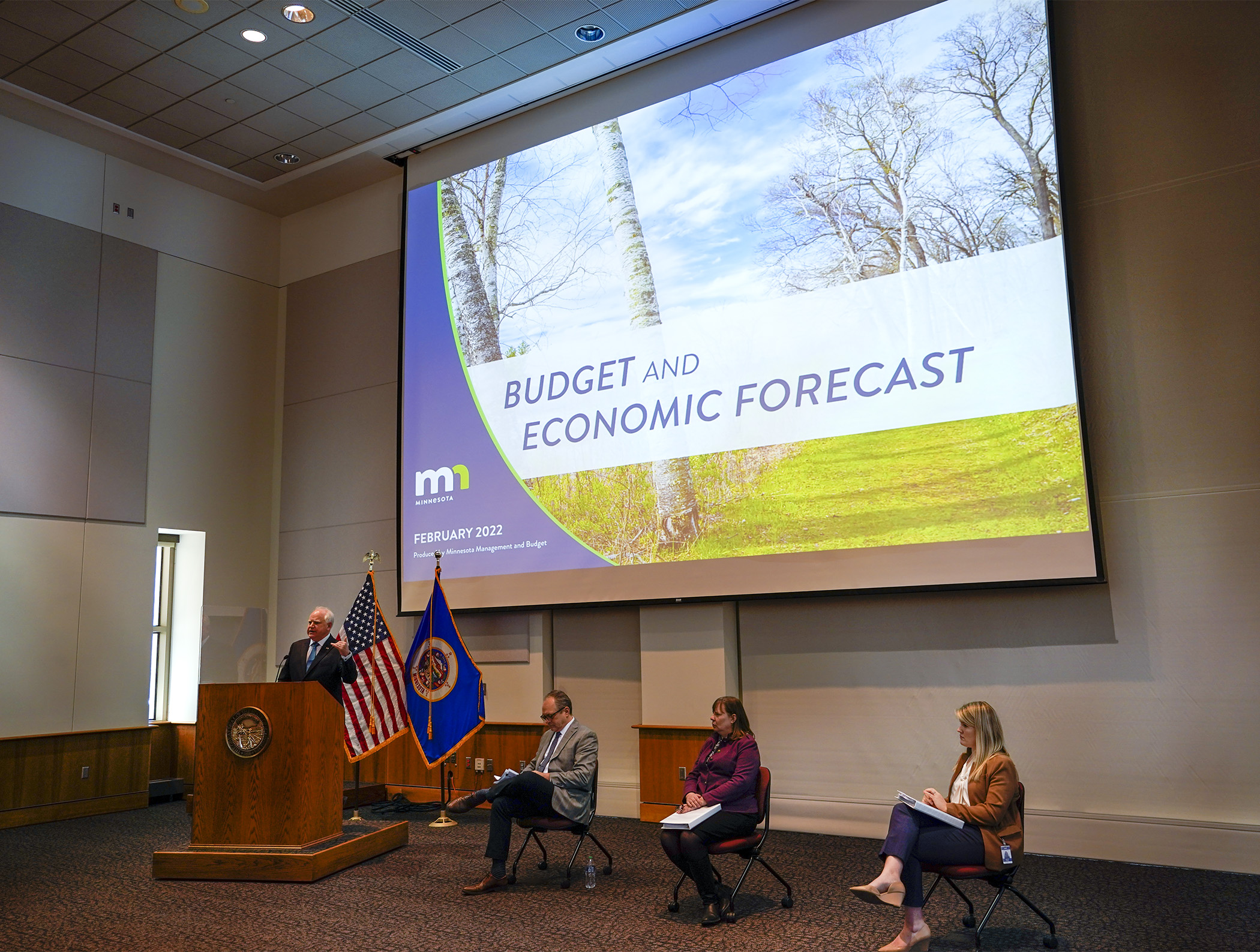Should inflation be included on both sides of the budget forecast ledger?

Subtraction by addition would provide a clearer picture of the state’s projected $17.6 billion surplus.
Plus, what Rep. Zack Stephenson (DFL-Coon Rapids) calls a “budgeting gimmick” that can skew the state’s true fiscal situation would go away.
He sponsors HF35 to include inflation on both the revenue and spending sides of the state’s biannual budget and economic updates provided by Minnesota Management and Budget officials.
“If you don’t account for inflation when you’re budgeting, bad things happen. This bill simply corrects that. It’s honest accounting,” Stephenson told the House State and Local Government Finance and Policy Committee Thursday.
Approved on a 9-4 nearly party line vote — Rep. Danny Nadeau (R-Rogers) voted in the affirmative — the bill’s next stop is the House Ways and Means Committee.
In 2002, the state was projected to face a significant debt. Instead of slicing and dicing the state budget, lawmakers passed a law to remove inflation from the expenditure side of the ledger.
Minnesota Management and Budget Commissioner Jim Schowalter said the agency supports the modernization as does the state’s Council on Economic Advisors.
According to a fiscal note, the change would reduce the projected state budget surplus by $1.55 billion in the 2024-25 biennium and nearly $3.31 billion in the following two-year budget.
The bill does not specify if the inflationary increase would be based on the Consumer Price Index or another factor. State budget officials would need to consult with chairs and ranking minority party members of specific committees and legislative fiscal staff to determine the inflation rate and how it is to be included in expenditure estimates.
Among arguments made by Republicans against the proposal is that it could increase spending down the road. For example, Rep. Jim Nash (R-Waconia) said it could be easier for legislators to simply bump future state spending instead of having full budgetary discussions. “We should have those conversations. … I want to have those conversations,” he said.
Nadeau asked if it would be possible to not include inflation in revenue projections. “That would take us further away from reality. Inflation is real. We should recognize it,” Stephenson said.
Related Articles
Search Session Daily
Advanced Search OptionsPriority Dailies
Speaker Emerita Melissa Hortman, husband killed in attack
By HPIS Staff House Speaker Emerita Melissa Hortman (DFL-Brooklyn Park) and her husband, Mark, were fatally shot in their home early Saturday morning.
Gov. Tim Walz announced the news dur...
House Speaker Emerita Melissa Hortman (DFL-Brooklyn Park) and her husband, Mark, were fatally shot in their home early Saturday morning.
Gov. Tim Walz announced the news dur...
Lawmakers deliver budget bills to governor's desk in one-day special session
By Mike Cook About that talk of needing all 21 hours left in a legislative day to complete a special session?
House members were more than up to the challenge Monday. Beginning at 10 a.m...
About that talk of needing all 21 hours left in a legislative day to complete a special session?
House members were more than up to the challenge Monday. Beginning at 10 a.m...